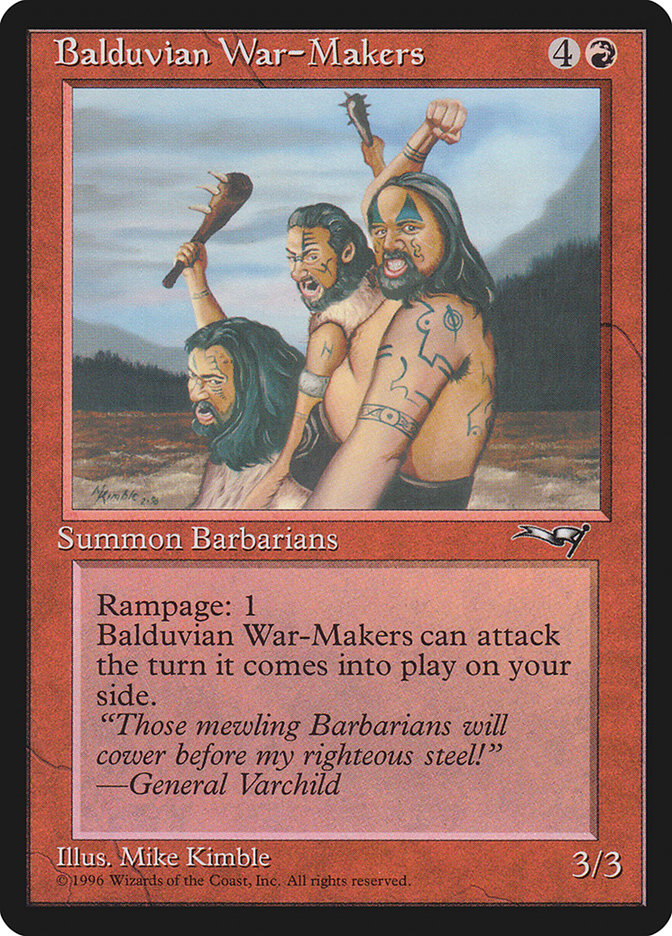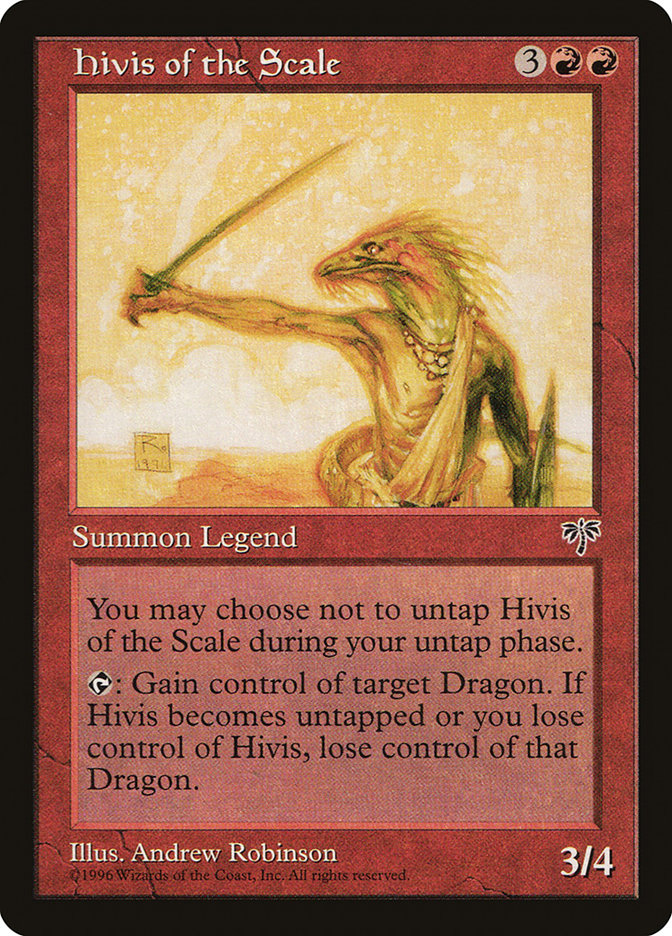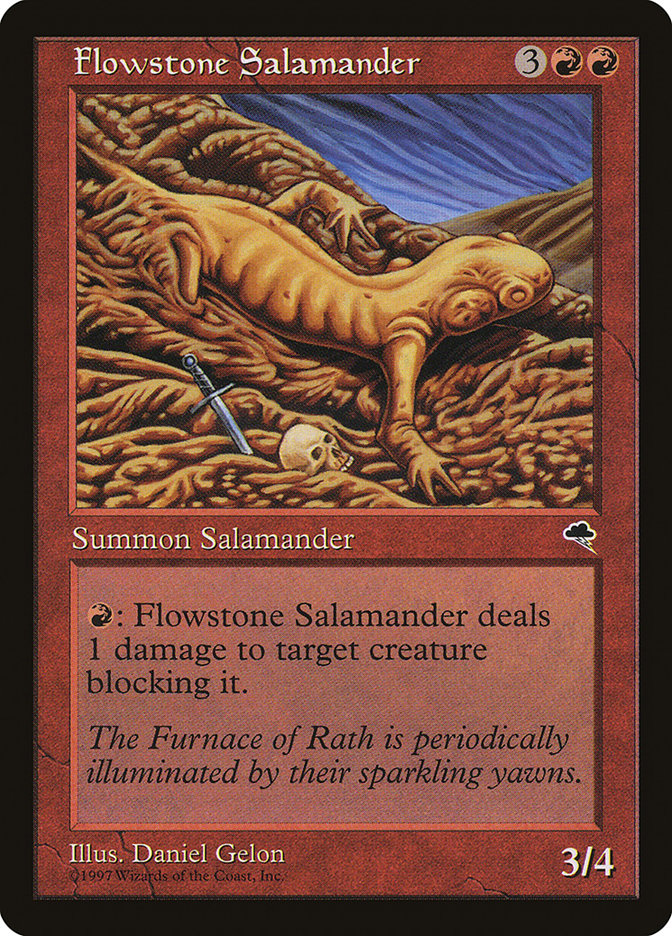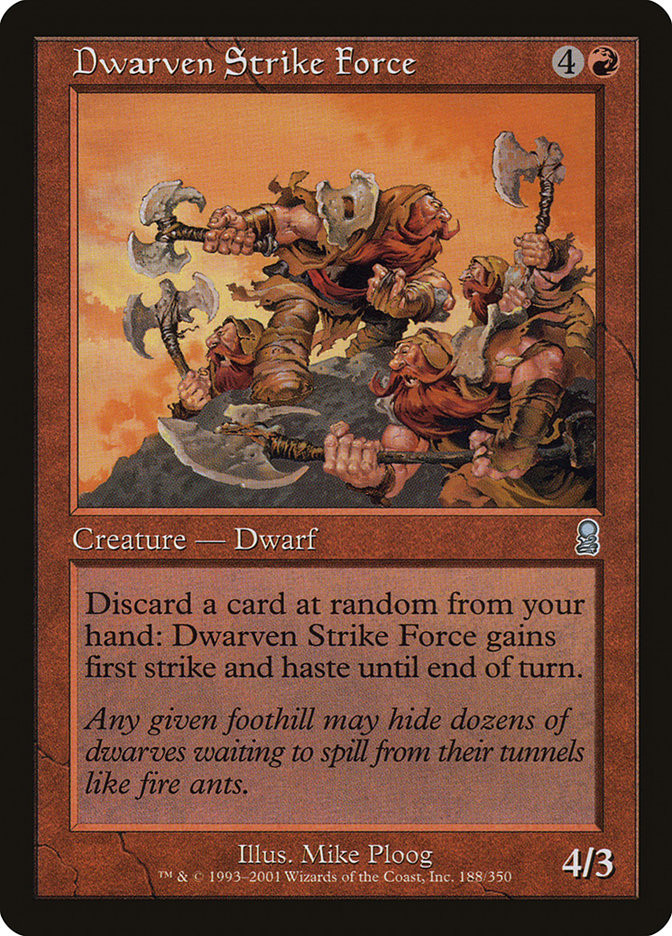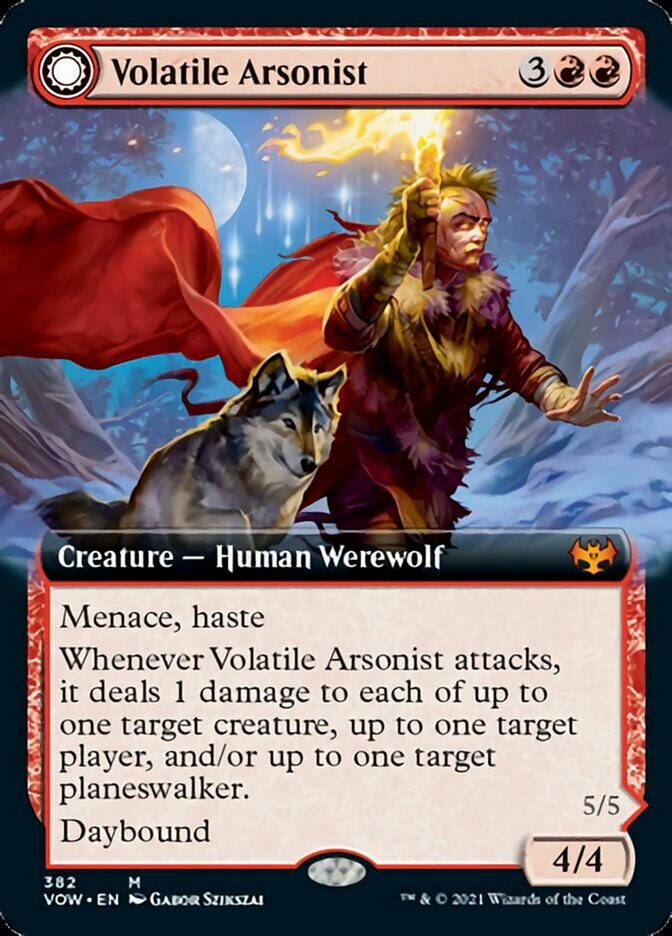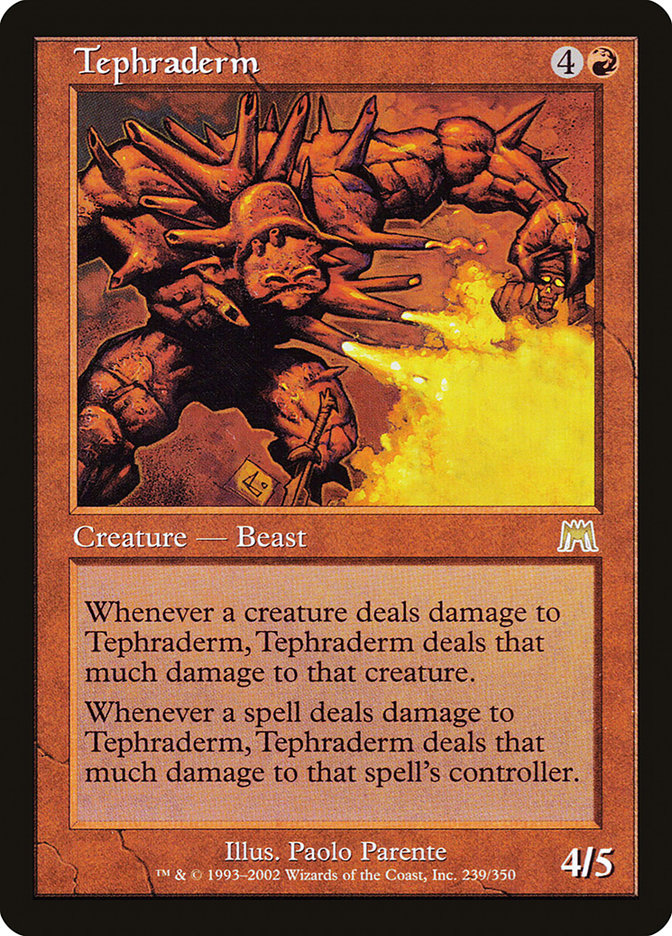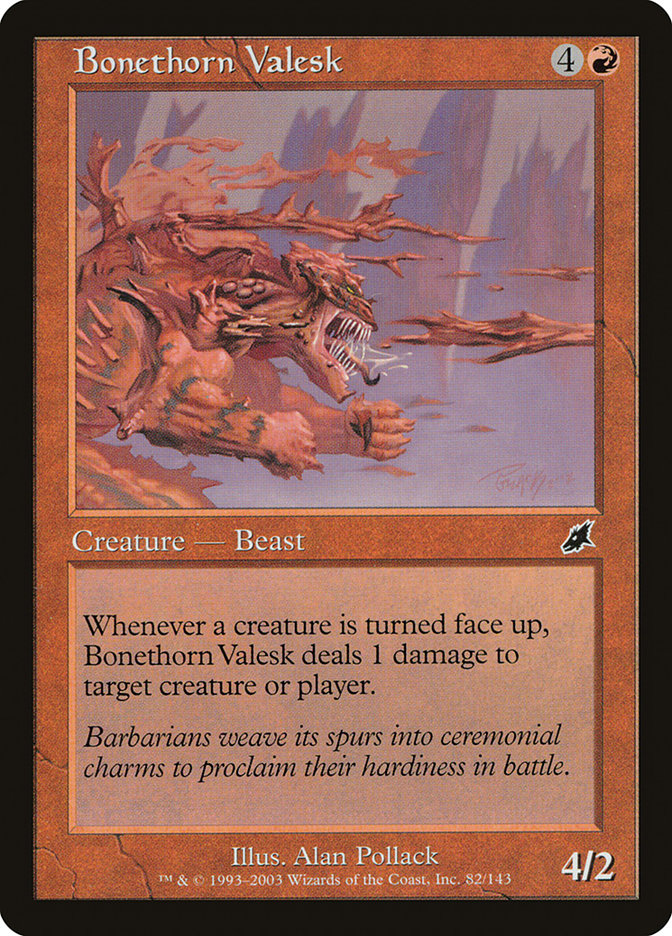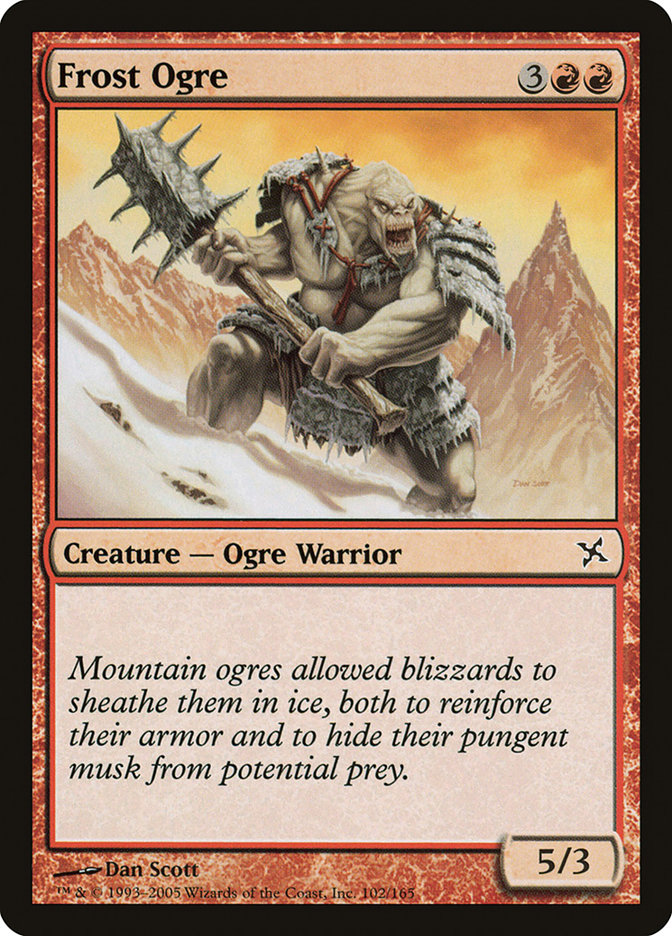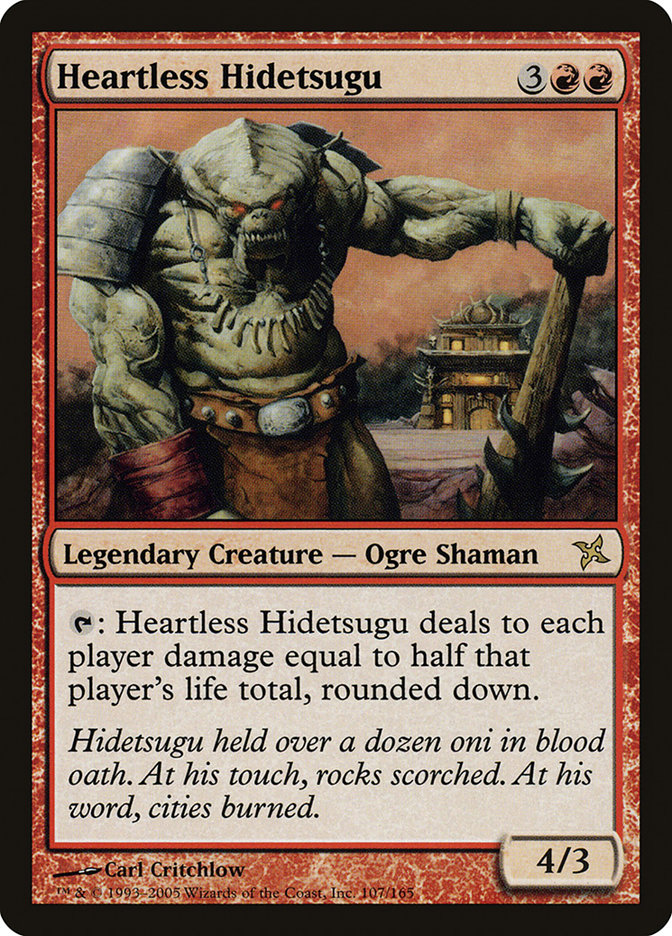Terremotista Carta MTG
| Colecciones da carta | Lanzado en 6 coleccionesVer todos |
| El coste de maná | |
| Costo de maná convertido | 5 |
| Rareza | Mítica |
| Tipo | Criatura — Berserker gigante |
| Habilidades | Foretell |
| Fuerza | 5 |
| Tenacidad | 4 |
Texto de la carta
Tus oponentes no pueden ganar vidas. Al comienzo de tu mantenimiento, el Terremotista hace 2 puntos de daño a cada oponente. Esta habilidad solo se dispara si el Terremotista está en el campo de batalla o si el Terremotista está en tu cementerio y controlas un Gigante. Profetizar {2}{R}{R}.
Cartas Similares
Quakebringer introduce un nuevo cambio en la lista de criaturas formidables en MTG. Este gigante poderoso encaja perfectamente en el grupo de criaturas que infligen daño como Inferno Titan, que dispersa el daño entre múltiples objetivos de manera similar. Sin embargo, Quakebringer viene con un efecto persistente que puede afectar consistentemente el total de vida del oponente, incluso desde el cementerio, siempre y cuando controles un gigante.
Cuando se compara con Torbran, Thane of Red Fell, Quakebringer ofrece una ventaja estratégica diferente. Mientras que Torbran amplifica el daño infligido a los oponentes, Quakebringer asegura un flujo constante de daño. En algunos aspectos, podría ser comparado con el evasivo y dinámico Embercleave. Aunque Embercleave no inflige daño directo, aumenta el poder de una criatura, lo que potencialmente resulta en una producción de daño mayor. Sin embargo, la singularidad de Quakebringer radica en su consistencia e independencia de la fase de combate.
Adoptar a Quakebringer en un mazo significa valorar el daño persistente y la sinergia con el cementerio sobre el impacto instantáneo. Su efecto continuo puede cambiar el juego, colocándolo en un nicho de amenazas confiables y constantes dentro de la variada línea de criaturas de MTG.
Cartas similares a Terremotista por color, tipo y coste de maná
Mazos que usan esta carta
Mazos MTG usando Terremotista. Profundiza en la estrategia de los mazos, cartas de aparador, lista de ideas y exportación para jugar en ARENA o MOL.
| # | Nombre | Formato | Arquetipo | Evento |
|---|---|---|---|---|
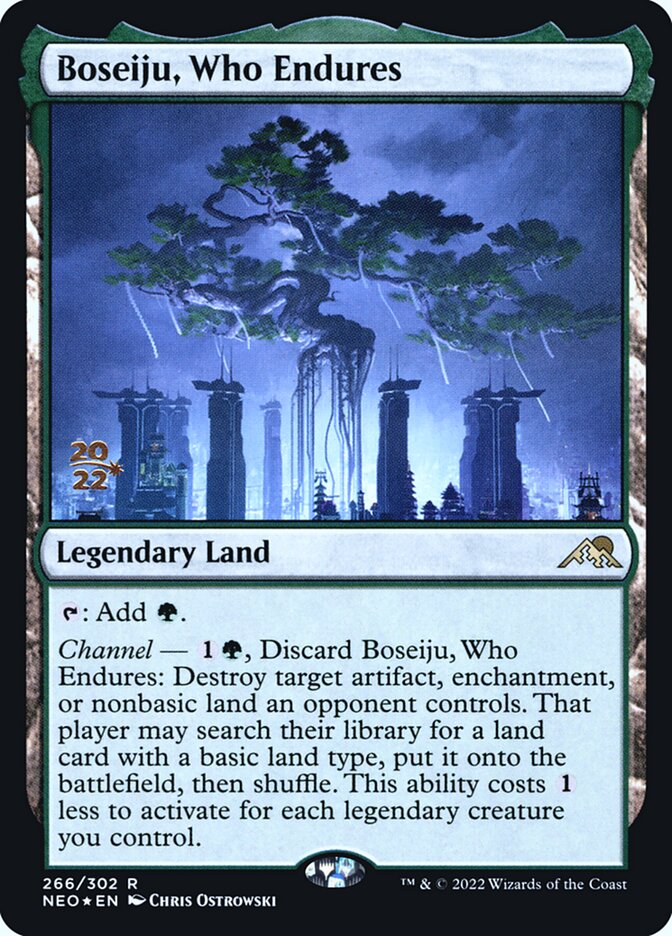 | Gruul Aggro | Pioneer | Gruul Aggro | Pioneer Challenge 32 2024-05-10 |
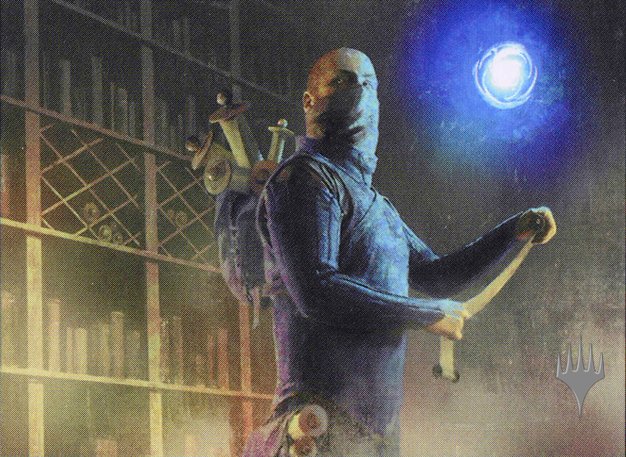 | 4c Enigmatic Fires | Pioneer | 4c Enigmatic Fires | Pioneer Challenge 32 2024-04-15 |
 | 5c Midrange | Pioneer | 5c Midrange | Pioneer Challenge 32 2024-04-12 |
 | 5c Enigmatic Fires | Pioneer | 5c Enigmatic Fires | Pioneer Preliminary 2024-01-11 |
Aspectos positivos de la carta
Ventaja de cartas: Quakebringer cuenta con una habilidad que inflige daño directo a los oponentes, potencialmente eliminando sus criaturas y desequilibrando la balanza a tu favor sin perder cartas de tu mano.
Aceleración de recursos: Su sinergia con Gigantes o hechizos que se preocupan por los Gigantes puede acelerar tu juego, ya que sigue infligiendo daño incluso desde el cementerio siempre que tengas un Gigante en el campo de batalla, acelerando así la presión que ejerces sobre el oponente en cada turno sin invertir recursos adicionales.
Velocidad instantánea: Aunque Quakebringer en sí no opera a velocidad instantánea, apoya una estrategia de MTG que incluye interacciones a velocidad instantánea. Siendo una amenaza formidable incluso cuando está en el cementerio, te permite jugar instantáneos mientras mantienes una producción constante de daño, lo cual se alinea bien con un mazo diseñado para mantener el maná disponible y interactuar en el turno del oponente.
Aspectos negativos de la carta
Requisito de descarte: Quakebringer exige que tengas una criatura gigante o una carta gigante en tu cementerio para aprovechar su habilidad pasiva. En situaciones donde no puedas cumplir esta condición, especialmente al principio del juego o en mazos sin un tema gigante suficiente, no lograrás explotar todo el potencial de Quakebringer.
Coste de maná específico: Un desafío con Quakebringer es su coste de maná específico, que requiere dos manás rojos. Esto lo hace menos flexible en mazos multicolores que quizás no tengan consistentemente disponibles las fuentes de maná rojo necesarias, lo que potencialmente puede provocar retrasos al jugar la carta en curva.
Coste de maná comparativamente alto: Con un coste de lanzamiento de cuatro manás, el impacto de Quakebringer en el juego puede no alinearse con su coste de lanzamiento, especialmente en comparación con otras criaturas de cuatro manás en la meta que podrían proporcionar una presencia o impacto inmediatos en el tablero. Esto puede ponerte en desventaja en juegos más rápidos donde la eficiencia es primordial.
Razones para incluir Quakebringer en tu colección
Versatilidad: Quakebringer ofrece una opción robusta para mazos que se centran en infligir daño, ya sea que estés jugando un Gruul aggro o un mazo de rango medio. Su capacidad para persistir desde el cementerio asegura que siga siendo una amenaza continua.
Potencial de combo: Esta carta se sincroniza bien con mazos que capitalizan los Gigantes o hechizos que infligen daño. Puede ser una parte clave de combos que amplifican su capacidad de infligir daño, aumentando la presión sobre tu oponente.
Relevancia en el meta: Quakebringer encaja perfectamente en el meta actual que favorece estrategias basadas en criaturas. La carta es capaz de pasar por alto defensas como ganancia de vida, apuntando a oponentes incluso si han fortificado su posición, convirtiéndola en una adición táctica a tu arsenal.
Cómo vencer
Quakebringer es una fuerza poderosa en MTG, conocida por su habilidad para infligir consistentemente daño a los oponentes. Esta carta de criatura impacta en el juego con su producción de daño directo, representando una amenaza significativa si se le deja sin control en el campo de batalla. Para contrarrestar efectivamente a Quakebringer, una estrategia es emplear hechizos de eliminación que puedan apuntar directamente a él. Cartas como Camino a la Exilio o Jinete Asesino funcionan eficientemente para retirar a Quakebringer del juego. Además, cartas que odian al cementerio como Reliquia de Progenitus o Cripta de Tormod pueden inhibir la habilidad de Quakebringer mientras está en el cementerio, evitando su efecto de daño persistente.
Gestionar estrechamente tu total de vida también es clave al enfrentarte a esta carta. Las cartas que ofrecen ganancia de vida pueden proporcionar un colchón contra el daño constante que Quakebringer inflige. Por lo tanto, incluir estrategias de ganancia de vida en tu mazo podría resultar crucial para mantenerse durante el juego tardío. Otra táctica es controlar el ritmo del juego a través de contramagos o hechizos de permiso para evitar que Quakebringer llegue al campo de batalla. Con una planificación cuidadosa y los hechizos adecuados, puedes navegar alrededor del poder sísmico de Quakebringer y asegurar tu victoria en MTG.
Recomendaciones de BurnMana
Mejorar tu destreza en MTG significa integrar cartas que proporcionen daño persistente y prosperen bajo un juego estratégico, como Quakebringer. Su capacidad para erosionar el total de vida de tu oponente, incluso desde más allá del campo de batalla, exige atención y puede moldear el rumbo de la batalla. Considera mazos que se beneficiarían de sus sinergias de cementerio, específicamente aquellos que incorporan Gigantes para optimizar su potencial de infligir daño. Para jugadores que buscan esculpir un mazo que aproveche la presión continua y tengan un toque dramático, dominar Quakebringer podría ser clave. Únete a nosotros para adentrarte en estrategias efectivas y convertir a Quakebringer en una de las piezas angulares de tu mazo.
Donde comprar
Si estás buscando comprar una carta MTG Quakebringer de un coleccione específico como Magic Online Promos and Kaldheim, existen varias opciones confiables que debes considerar. Una de las fuentes principales es tu tienda de juegos local, donde a menudo puedes encontrar paquetes de refuerzo, cartas individuales y mazos preconstruidos de colecciones actuales y pasadas. A menudo ofrecen el beneficio adicional de una comunidad donde puedes intercambiar con otros jugadores.
Para un inventario más amplio, particularmente de colecciones más antiguos, mercados en línea como TCGPlayer, Card Kingdom y Card Market ofrecen amplias selecciones y te permiten buscar cartas de colecciones específicos. Las plataformas de comercio electrónico más grandes como eBay y Amazon también tienen listados de varios vendedores, lo que puede ser un buen lugar para buscar productos sellados y hallazgos raros.
Además, el sitio oficial de Magic suele tener un localizador de tiendas y listas de minoristas para encontrar Wizards of the Productos con licencia costera. Recuerde comprobar la autenticidad y el estado de las cartas al comprarlas, especialmente a vendedores individuales en mercados más grandes.
A continuación se muestra una lista de algunos sitios web de tiendas donde puede comprar las Quakebringer y otras cartas MTG:
 COMPRAR
COMPRAR BurnMana es un socio oficial de TCGPlayer
- eBay
- Card Kingdom
- Card Market
- Star City Games
- CoolStuffInc
- MTG Mint Card
- Hareruya
- Troll and Toad
- ABU Games
- Card Hoarder Magic Online
- MTGO Traders Magic Online
Ver productos MTG
Impresiones
La carta Quakebringer Magic the Gathering se lanzó en 4 colecciones diferentes entre 2021-02-05 y 2021-02-06. Ilustrado por 2 diferentes artistas.
| # | Liberado | Nombre | Código | Símbolo | Número | Marco | Disposición | Borde | Artista |
|---|---|---|---|---|---|---|---|---|---|
| 1 | Magic Online Promos | PRM | 88300 | 2015 | Normal | Negra | Randy Vargas | ||
| 2 | 2021-02-05 | Kaldheim | KHM | 145 | 2015 | Normal | Negra | Lucas Graciano | |
| 3 | 2021-02-05 | Kaldheim | KHM | 297 | 2015 | Normal | Sin fronteras | Randy Vargas | |
| 4 | Kaldheim Art Series | AKHM | 37 | 2015 | Serie de arte | Sin fronteras | Lucas Graciano | ||
| 5 | 2021-02-06 | Kaldheim Promos | PKHM | 145s | 2015 | Normal | Negra | Lucas Graciano | |
| 6 | 2021-02-06 | Kaldheim Promos | PKHM | 145p | 2015 | Normal | Negra | Lucas Graciano |
Legalidades
Formatos de Magic the Gathering donde Terremotista tiene restricciones
| Formato | Legalidad |
|---|---|
| Commander | Legal |
| Historic | Legal |
| Legacy | Legal |
| Modern | Legal |
| Oathbreaker | Legal |
| Vintage | Legal |
| Duel | Legal |
| Explorer | Legal |
| Gladiator | Legal |
| Brawl | Legal |
| Pioneer | Legal |
| Timeless | Legal |
Reglas e información
La guía de referencia para las reglas de las cartas Terremotista de Magic: The Gathering proporciona las reglas oficiales, las erratas emitidas, así como un registro de todas las modificaciones funcionales que se han producido.
| Fecha | Texto |
|---|---|
| 05/02/2021 | Porque desterrar una carta con el juego previo de tu mano es una acción especial, puedes hacerlo en cualquier momento en el que tengas prioridad durante tu turno, incluso en respuesta a hechizos y habilidades. Una vez que anuncias que estás tomando la acción, ningún otro jugador puede responder intentando quitar la carta de tu mano. |
| 05/02/2021 | Lanzar una carta pronosticada desde el exilio sigue las reglas de tiempo de esa carta. Si pronosticas una carta instantánea, puedes lanzarla tan pronto como sea el siguiente turno del jugador. En la mayoría de los casos, si pronosticas una carta que no es instantánea (o no tiene destello), tendrás que esperar hasta tu próximo turno para lanzarla. |
| 05/02/2021 | Si Quakebringer está en el campo de batalla al comenzar tu mantenimiento, su habilidad se activará incluso si ya no es un Gigante y no controlas otro Gigante. |
| 05/02/2021 | Si estás lanzando una carta anunciada desde el exilio por su coste de adivinanza, no puedes elegir lanzarla por otros costes alternativos. Sin embargo, puedes pagar costes adicionales, como costes de kicker. Si la carta tiene algún coste adicional obligatorio, esos deben pagarse para lanzar el hechizo. |
| 05/02/2021 | Quakebringer entrando al campo de batalla no deshará ninguna vida ganada anteriormente en el turno. |












